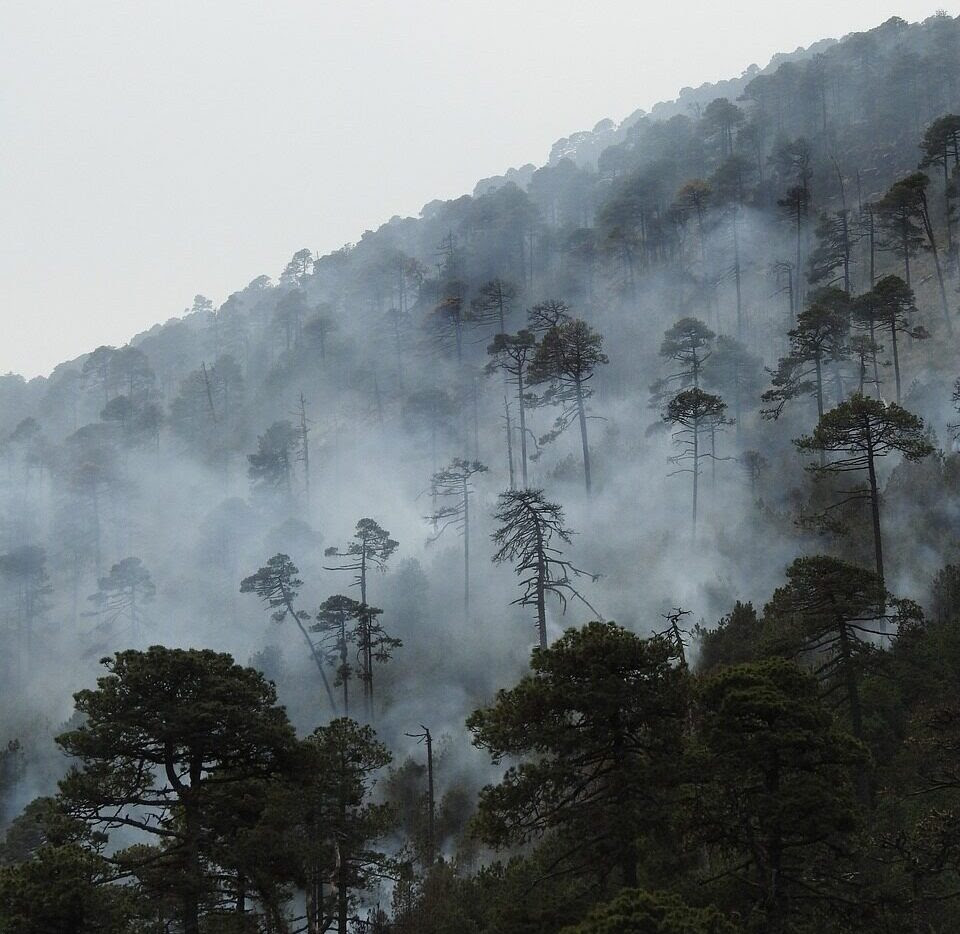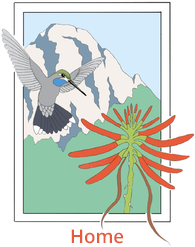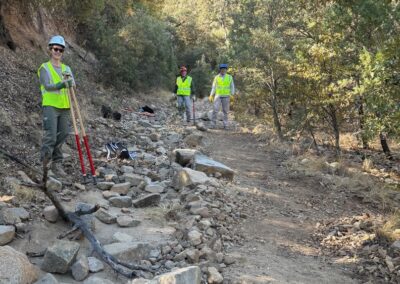Preservation
Those who value the splendors of Madera Canyon know that Nature is resilient, accustomed over the millennia to ebbs and flows. We understand that there will be years with ample monsoon rains and those that remind us that we live in a desert. The abundance of plants and animals in the Canyon is also variable, adhering to the rhythms of Nature.
Our role as current stewards of the Canyon is to ensure that we preserve for future generations the beauty of the Canyon that amazes us and magic of the Canyon that restores our spirits. Preservation obliges us, insofar as possible, to let nature be, to disturb the life and the land as little as possible while we are there, to leave only footprints and take away only photos and memories. All of us who enjoy the Canyon share this obligation.
Old Baldy Approach Trail
A bedrock principle of wilderness preservation and sustainability is to remain on the trails and leave nothing behind but your footprints. But what happens when the trail itself forces hikers off due to unsafe conditions? When monsoon rains erode soil, exposing endless rocks that hikers step over or around – making the trail wider and making preservation that much more difficult?
This is the situation that was facing the Friends of Madera Canyon and the Nogales District of the Coronado National Forest on the Old Baldy Approach Trail at the upper end of the Madera Canyon Recreation Area. At one time a road, with drains and retaining walls built by the Civilian Conservation Corps in the late 1930s, it now serves as the approach to the Old Baldy, Carrie Nation, and Vault Mine Trails. The road bed, unfortunately, doesn’t make for a great trail foundation, especially when the slope of the road causes water to flow down the trail and erode it before water reaches the drains built into the hill sides. Ideally, a well-positioned trail enables water to wash across it and leave the trail quickly, minimizing erosion.
FoMC, along with independent consultant Eric Ruljancich, owner of Outslope Trail Solutions, met with our USFS partners late this spring to address the root cause of the ever widening and continually eroding trail. The solution everyone endorsed was to create a new “trail track,” moving the trail off the roadbed to an outslope, where monsoon rains would quickly leave the trail and flow down the hillside slope. With summer approaching, FoMC Trail Crew leads Michele Gazica and Tom Bailey devised a unique solution to keep the trail open for hikers while getting some work done in the summer.
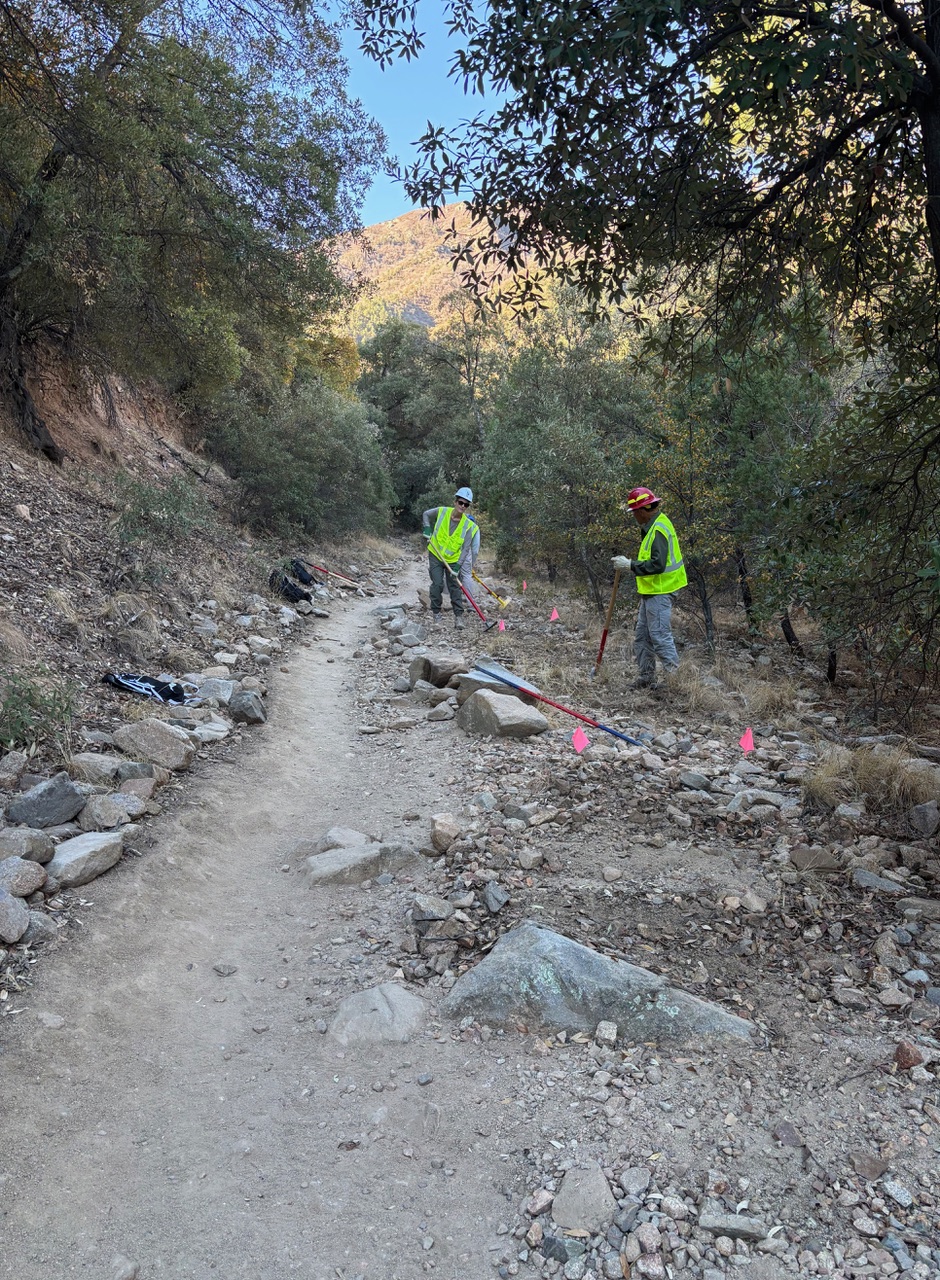
Fig 1. Stacey Barnes and David Linn work in the newly marked outsloped section while leaving the existing trail open to hikers.
Early in the morning, one or two times a month before the summer heat makes working outdoors unsafe, the FoMC Volunteer Trail Crew are building a new trail, one section at a time. When a new section is ready for hikers, the Friends naturalize the old trail segment with rocks, dead branches, logs and forest detritus. These larger materials provide a visual cue to hikers to travel on the new trail. The detritus retains moisture needed for grasses and trees to reclaim the former trail. So far, 4 segments have been completed and one more is already prepared for the next trail work session on 17 September. The Trail Crew plans to have most of the trail moved this Fall.
This trail has been a constant maintenance headache and some of the Friends volunteers had vowed to “never move another rock on that trail.” But after a couple volunteer work sessions everyone involved saw that implementing the solution was easier than expected, and the results were better than expected: the outsloped trail is holding its own against the monsoon rains. It even has some refreshing shade!
If you think you’d like to help the FoMC Preservation and Maintenance Trail Crew improve the hiker experience and preserve your Madera Canyon, shoot us an email at volunteer@friendsofmaderacanyon.org. See you on the trails!
Tom Bailey
Trash and Litter - It can outlive us all
By Debbie Gilliam, Preservation & Clean Up Volunteer
Discarded items – you might casually flick them out of your hand or let the wind carry them away, without a second thought. However, what you may not realize is that they can be an eyesore to others, potentially deadly to birds or animals that ingest them, and can take an exceptionally long time to decompose. Many of these items could remain visible for anywhere between three months to one million years.
This display was created with the intention of educating visitors to Madera Canyon about the decomposition time of discarded items. Hopefully this will remind everyone to “Pack It In” and “Pack It Out,” or at the very least, dispose of items in the trash bin.”
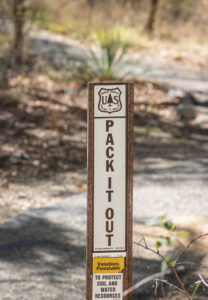
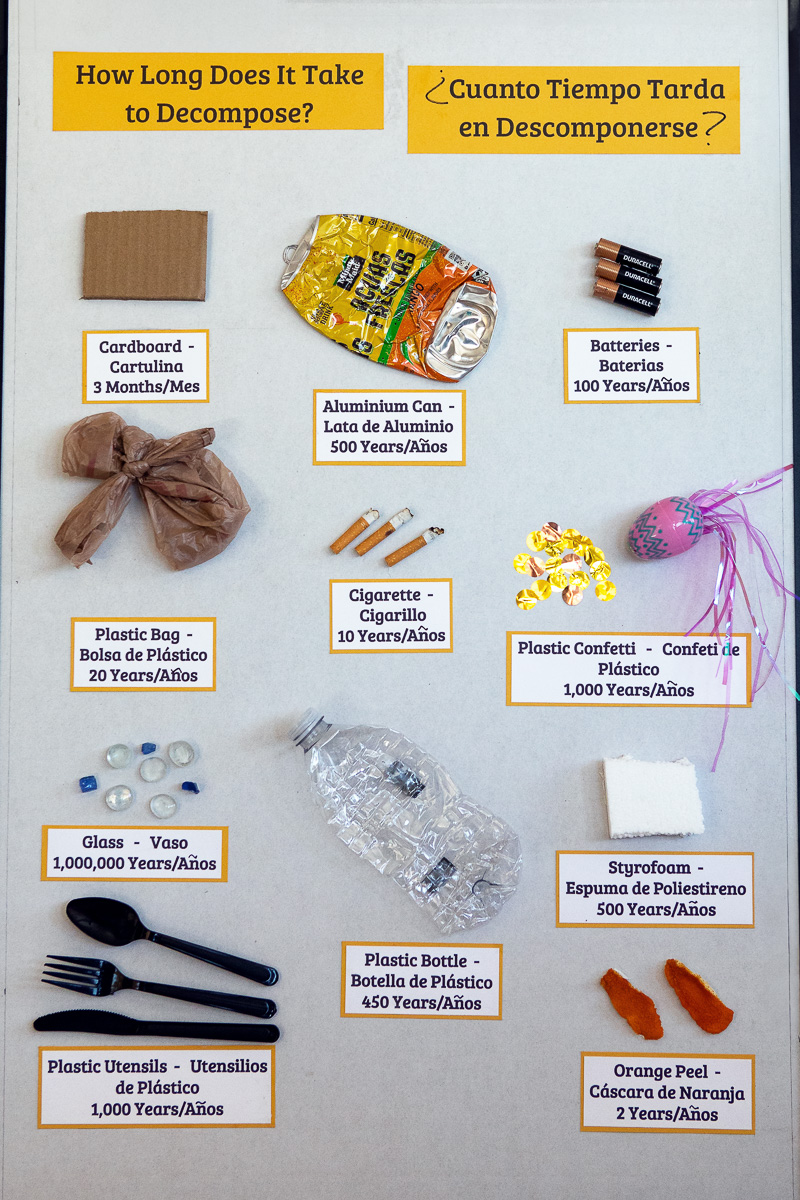
Challenges in the Canyon

Collection of plants and wildlife
There is an initiative by the Friends to prohibit all collecting of wildlife and plant life in the Madera Canyon Recreation Area. Some wildlife (including many plants) are already legally protected, of course – those that are endangered or rare, and nearly all birds. Game animals are also protected in the MCRA, since no hunting is allowed there.
In contrast, however, collectors, both commercial and private, have considerable freedom to take numerous smaller mammals, reptiles, amphibians, and insects, as well as many plants. And it is more than likely that some rare and endangered plants are also taken by less experienced or discriminating collectors. In an area as fragile as the Canyon, essentially open collecting cannot help but have a deleterious effect on the ecosystems involved. This is especially the case in a drought season like the present.
Erosion
Hiking tips for preserving the canyon
There are more than 150 long distance hiking trails in the US, and more than 74,000 miles of hiking trails throughout the country. That might sound like a lot, but when you consider that more than 40 million people go hiking every year, it’s clear that our trails get a lot of foot traffic. Over time, high usage in places like Madera Canyon can end up damaging trails and the natural habitat that we love to visit. That is why it’s so important that hikers follow these tips to help preserve nature when hiking:
READ MORE
- Clean Off Your Boots As you hike through different areas, your boots pick up soil that may contain seeds, bacteria, and sometimes even small arthropods. When you go from one location to another without cleaning off your boots, you’re potentially depositing debris into a new area which could prove to be harmful. Invasive plant and insect species can spread to new areas and replace native species. Tree fungi can damage or kill trees. Chytrid fungus is spreading globally and is deadly to amphibians. Not cleaning your boots can set off a chain reaction of potential damage for the natural world. So between hikes, wipe down your boots and make sure they’re clean before you start a hike in a different place.
- Bring a Reusable Water Bottle Single use plastics are overwhelming the earth. Yet,some hikers still bring single use bottles of water or sports drink when they hike; many end up littering our trails or clogging public trash cans. Invest in a high quality metal or BPA-free reusable water bottle that you can carry hiking. A water pack is also a good alternative. These containers will hold more water than a single use bottle and are much better for the natural world. Also, pack your trail snacks in reusable containers when possible.
- Stick to the Trail Every hiker should carry a paper copy of the trail map with them and stay on the designated trail no matter what. When you go walking off the trail you can trample and kill plants, break branches off shrubs and young trees, and contribute to damaging soil erosion around the trail. Don’t take shortcuts or try to create your own trail- this creates “social trails” which can seriously damage habitat. Stay on the designated trail when you’re hiking, even where it’s wet or muddy.
- Don’t Pursue/Annoy the Animals It’s wonderful to see deer, birds, and other animals when you’re out hiking, but please remember that you’re a guest in their homes! Don’t try to approach animals or lure them to you with food. Wild animals can be dangerous! Don’t leave food out for animals or try to take selfies with them. Do not pursue them off-trail. Enjoy their beauty from a distance and leave them alone. You can take photos of them from a distance to post on your social media, but do not approach closely. Use a telephoto or zoom camera lens to get that great wildlife photo from a safe distance for you and the animal.
- Take Your Trash with You It’s shocking how many people still litter when out hiking. If you have trash- like food wrappers or containers, pack it up carefully and take it out of the area with you. Then throw the trash away, or recycle it, in a proper receptacle later. Never throw your trash on the ground or leave it behind when you’re hiking.
Climate Change
How do we know the climate is changing?
Using historical and natural records, scientists have been able to measure the Earth’s past climate. People have measured the Earth’s temperature and amount of rainfall since the mid-1800s, providing a snapshot of the climate for the last 150 years. For climate measurements prior to this, researchers must obtain measurements from indirect sources, including core samples from ice, sediment, and trees. Learn more about how we know the climate is changing
US Forest Service United States Department of Agriculture (USDA)
